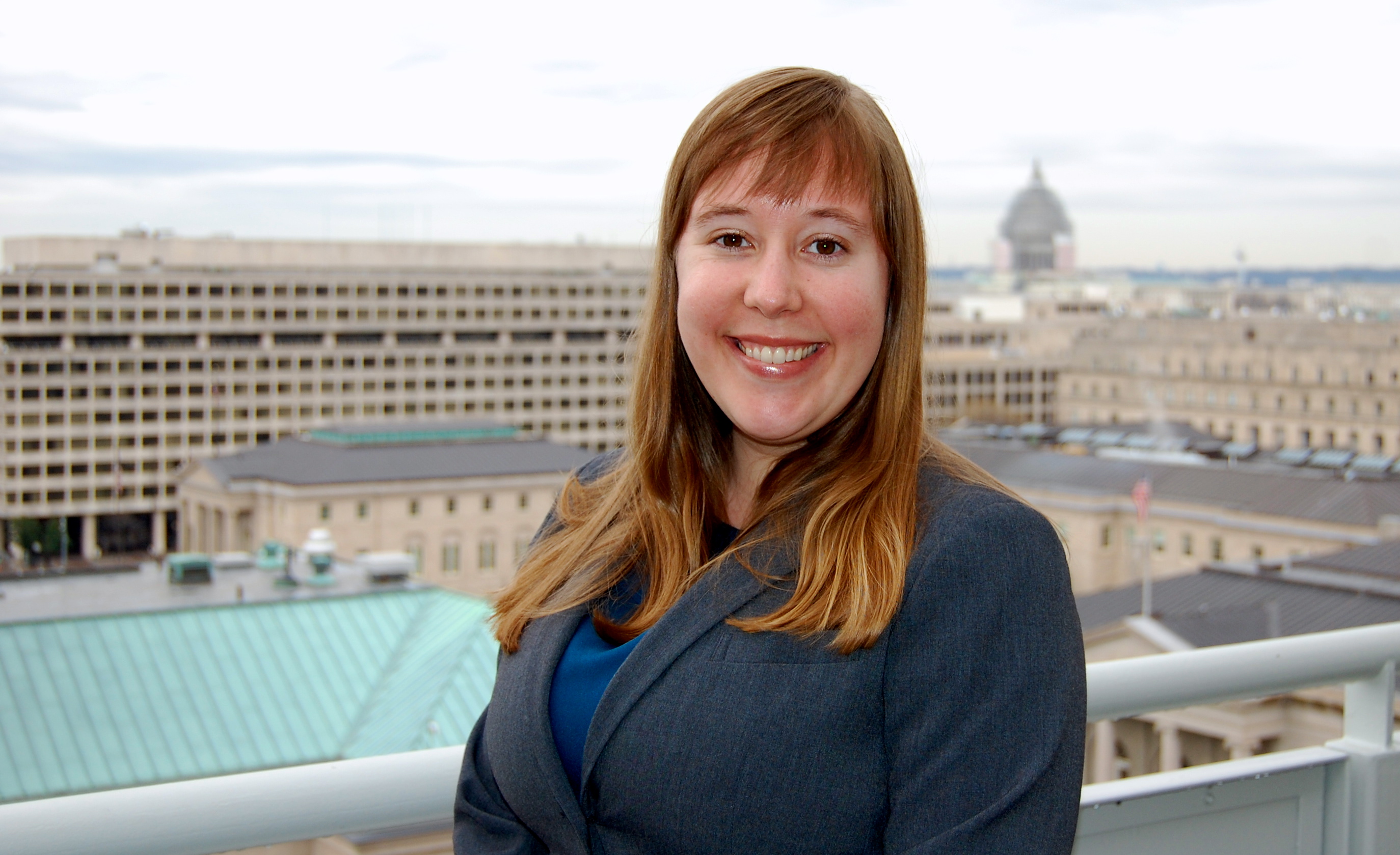Each year, the Christine Mirzayan Science & Technology Policy Graduate Fellowship Program offers graduate students and early career academics the opportunity to spend 12 weeks at the National Academies in Washington, DC learning about science and technology policy. Fellows from around the word are assigned a mentor at the National Academies, where they learn about the role that scientists and engineers play in advising national decision-making. By providing a hands-on experience, the program is designed to help fellows learn about employment opportunities outside academia, particularly in public policy. Many alumni of the program hold positions in Congressional committees and at federal agencies.
To learn more about this unique short-term public policy fellowship, we interviewed former fellow Emily Roberts, a recent PhD graduate of Duke University.
1. What inspired you to apply for the Christine Mirzayan Science & Technology Policy Graduate Fellowship?
About two years into my PhD, I realized that I didn’t want to continue in primary research after I finished grad school. At that time, I started widely exploring alternative careers and became very interested in science policy. The Mirzayan Fellowship is a leading science policy fellowship that grad students and people with graduate degrees can participate in.
One distinguishing aspect of the Mirzayan Fellowship is that it is only 12 weeks long, which is perfect for current graduate students as well as people who are investigating science policy but are not necessarily committed to pursuing it as a career. In fact, historically, only about a third of Mirzayan Fellows go on to a career in science policy. Since I wanted to learn more about science policy as a career but not devote 1-2 years to a longer fellowship or full-time employment, the Mirzayan Fellowship was perfect for me.
2. What are some of the benefits of the fellowship?
The fellowship takes place at the National Academies in Washington, DC. The primary benefit is the opportunity to work in science policy and learn about science policy at the federal level.
Fellows are placed with a mentor in a unit at the National Academies and spend 80-90% of their time working on one or more projects within that unit. I worked in the Center for Engineering Ethics and Society within the National Academy of Engineering on a project related to engineering ethics education. Through my work, I was able to demonstrate many of the translatable skills I gained during graduate school. I had a great mentor who can now be a reference for me in future job searches.
The other 10-20% of the fellows’ time is split between fellowship activities and networking. Fellowship activities often featured guests speaking to us about science policy (within the Academies or various branches of the federal government) and their careers and answering our questions. Three of these guests were the Presidents of the National Academy of Sciences, the National Academy of Engineering and the Institute of Medicine. Another recurring activity was a journal club, in which groups of fellows presented current issues in science policy for discussion. We were also encouraged to attend policy-related events around town, such as briefings and hearings.
Networking was an integral component of the fellowship, and we were required to keep a log of all the informational interviews we conducted. Dropping the ‘Mirzayan’ name gave fellows wonderful access to DC science policy professionals. I spent most of my networking time exploring whether a career in science policy is possible or probable outside of the DC area, largely through connecting with Mirzayan fellowship alumni.
The spring 2015 stipend was $8,500 for the 12-week period. A few nice additional perks were some lunches provided to us by the fellowship office, probably two per week on average. We also could get into the associated Koshland Science museum for free. Some fellows went to conferences with their mentors during or after the fellowship.
3. How has the fellowship impacted your current career path?
During my fellowship, I discovered that full-time science policy positions are generally limited to the DC area and a small number of state capitals and other cities. Since I want to move to southern California, it seemed rather unlikely that I would be able to find a science policy position there that resembles the ones available in DC. That was great information for me to gain during the 12-week period. Since I enjoyed my work during the fellowship, I will look for science policy positions in the future, but alongside other alternative careers as well. However, many of the other Mirzayan Fellows looking to stay in DC science policy have had success in finding positions, both at the Academies and through the AAAS Science & Technology Policy Fellowship.
In my free time outside of the Mirzayan Fellowship, I launched a new business that inspires and empowers early-career PhDs to make the most of their funding. I founded a website and I speak at universities. My conversations about personal finance with the other Mirzayan Fellows, all of whom had received stipends during graduate school, were very helpful for confirming the need for these types of resources and learning how different institutions handle trainee pay.
I highly recommend the Mirzayan Fellowship to anyone who is looking into science policy as a career, especially if moving to DC temporarily or permanently is attractive.
Emily Roberts earned a PhD in biomedical engineering from Duke University in 2014. She writes and speaks about personal finance for graduate students and postdocs and is the founder of the websites Grad Student Finances, PhD Stipends, and Evolving Personal Finance.
© Victoria Johnson 2015, all rights reserved.
